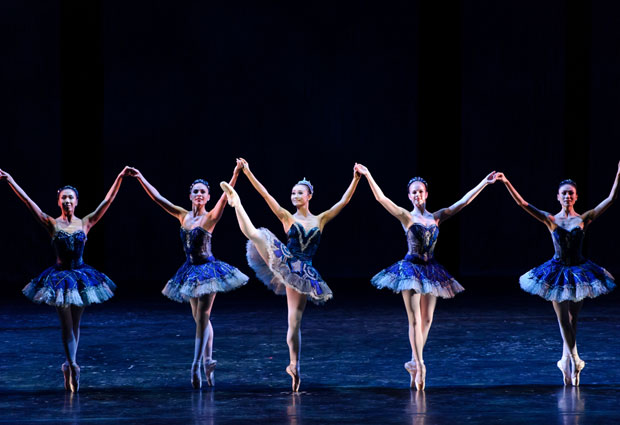
© Conrad Dy-Liacco. (Click image for larger version)
Hong Kong Ballet
An International Celebration of Ballet: Castrati, Dancing with the Wind, Le Grand Pas de Deux, Lady of the Camellias pdd, Symphonic Dances pdd, Theme and Variations
Hong Kong, Cultural Centre
3 November 2012
www.hkballet.com
A version of this review previously appeared in the HK Economic Journal
Hong Kong Ballet presented a diverse and well-balanced mixed programme in early November, consisting of two premieres and a revival of a major work. The most publicised premiere, which actually opened this three-part evening, was “Castrati” by the renowned Spanish choreographer, Nacho Duato, who is currently artistic director of the Mikhailovsky Ballet. Duato was also the former artistic director of the Compania Nacional de Danza in Madrid, which local audiences saw here at the 2004 Hong Kong Arts Festival.
“Castrati”, to Vivaldi, is an all-male ballet for a soloist and eight others set in darkness. The soloist is the victim chosen by the group to undergo castration at the end. The ending, which sees the soloist with blood on his hands, is naturally very dramatic. It’s reasonably well-crafted though slightly over-long and, to me, a hollow work – certainly appealing to those interested in seeing semi-nude male dancers on stage. The whole cast certainly deserved praise, especially Shen Jie who was most impressive as the chosen victim. As a male showcase however, I much prefer the ballet “Clear” by Australian choreographer, Stanton Welch, staged earlier on Hong Kong Ballet.
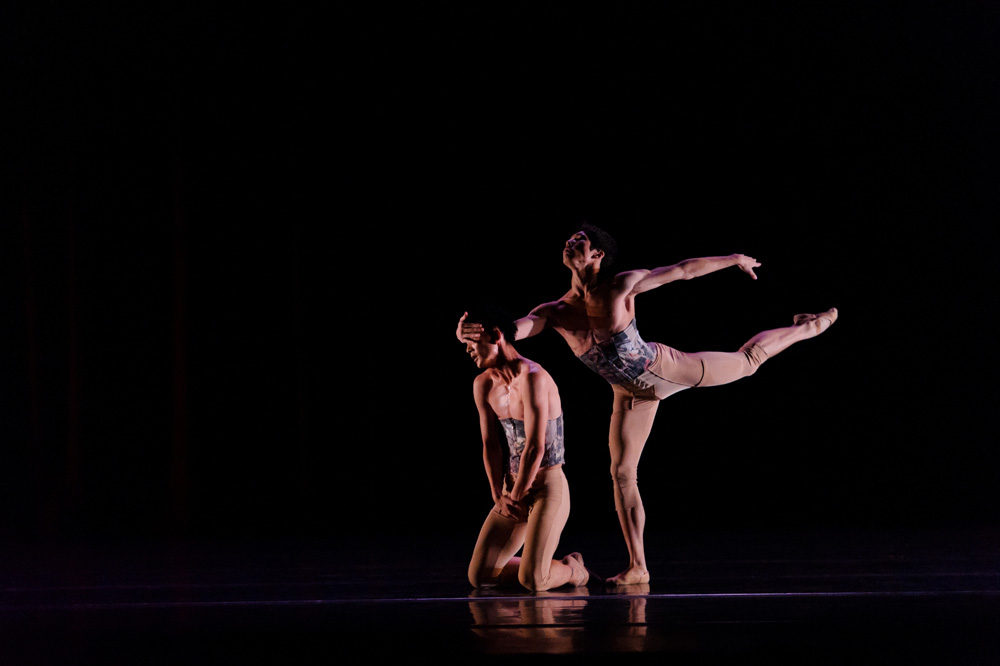
© Conrad Dy-Liacco. (Click image for larger version)
A good contrast was provided after the interval by the second premiere, “Dancing with the Wind”, which was an all-female ballet for six. It was created by a novice choreographer from Beijing, Li Jun, who is a principal dancer of the National Ballet of China. Li last appeared here with the National Ballet exactly a year ago as Siegfried in “Swan Lake”. Li, whose choreography is quite fluent, has managed to create an extremely watchable ballet with a Chinese flavour. The backdrop depicts an ink landscape painting. Actually at one point the choreography seems to quote from Balanchine’s masterpiece “Serenade”. Particularly outstanding in this work were Wu Fei-fei, who danced authoritatively at the end, and Liu Miao-miao.
The second half also included three pas de deux of which the best was “Le Grand Pas de Deux” by Christian Spuck. Originally created for the Stuttgart Ballet, this comic piece was first staged by Hong Kong Ballet last year and definitely deserves to be revived. A bespectacled ballerina with a red handbag is constantly being mishandled roughly by her male partner. The choreography is full of wit and fun and quotes frequently from the classics. Certainly the children in the audience loved it with constant laughter to be heard. Zhang Yao was hilarious as the rough male dancer, while Liu Yu-yao was superb as the poor ballerina.

© Gordon Wong. (Click image for larger version)
The other two duets featured the company’s guest principal, Yuan Yuan Tan of San Francisco Ballet. It’s most welcome to see her guesting more with Hong Kong Ballet besides her annual appearance in May. This time she brought a new partner from her home troupe, the tall and handsome Italian principal, Vito Mazzeo. He’s definitely a solid partner for Tan. Tan chose two pieces from her San Francisco repertory. She was warm and tender in the duet from “Lady of the Camellias” by Val Caniparoli. Her long line and large-scale dancing were an aesthetic delight. The other duet was from “Symphonic Dances”, created earlier this year by Edwaard Liang. Both dancers were clad in attractive golden costumes. This duet was full of charm, but was marred by a very abrupt and inconclusive ending.
The closing work was Balanchine’s masterpiece, “Theme and Variations”, the master’s homage to “Sleeping Beauty”. It had first been staged by the former director, John Meehan, in Hong Kong in 2006. Nice to see it back however, the lighting was too dark this time, which I hope will be corrected soon.
Jin Yao was again the first cast in this most demanding ballerina role. Jin was excellent, though at times she could afford to relax slightly. Wei Wei struggled at the end of his difficult variation, but partnered Jin strongly. The corps de ballet was slightly ragged and untidy in the middle of the work, but collected itself and impressed in the finale. This ballet should definitely be revived more frequently.











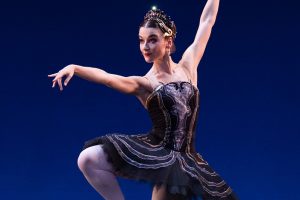
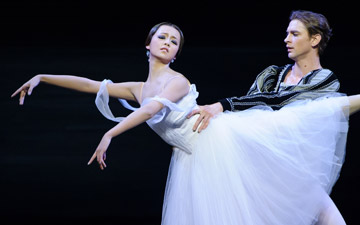
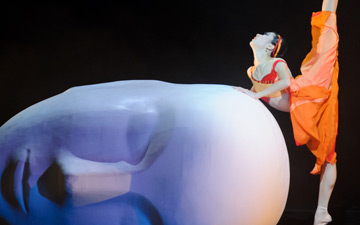

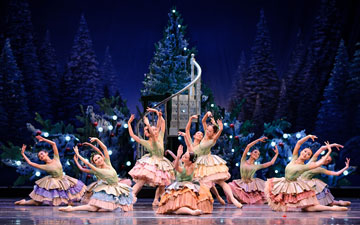
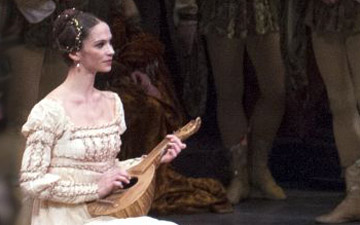
You must be logged in to post a comment.